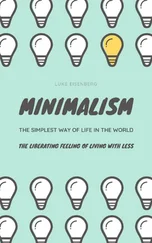When Gladstone finishes drawing his circle of evidence, any reader with at least half an open mind would have to accept that something far more serious is afoot here than merely a few indulgences in poetic license. There is no escaping the conclusion that Homer’s relation to color is seriously askew: he may often talk about light and brightness, but seldom does he venture beyond gray scale into the splendor of the prism. In those instances when colors are mentioned, they are often vague and highly inconsistent: his sea is wine-colored, and when not wine-colored, it is violet, just like his sheep. His honey is green and his southern sky is anything but blue.
According to later legend, Homer, like any bard worth his salt, was supposed to have been blind. But Gladstone gives this story short shrift. Homer’s descriptions-in everything except color-are so vivid that they could never have been conceived by a man who couldn’t see the world for himself. What is more, Gladstone proves that the oddities in the Iliad and the Odyssey could not have stemmed from any problems that were peculiar to Homer the individual. To start with, if Homer’s condition was an exception among his contemporaries, surely his defective descriptions would have grated on their ears and would have been corrected. Not only is this not the case, but it seems that traces of the very same oddities still abounded among the ancient Greeks even centuries later. “Violet-colored hair,” for example, was used as a description in Pindar’s poems in the fifth century BC. Gladstone shows in fact that the color descriptions of later Greek authors, even if not quite as deficient as Homer’s, “continued to be both faint and indefinite, in a degree which would now be deemed very surprising.” So whatever was wrong with Homer must have afflicted his contemporaries and even some later generations. How can all this be explained?

Gladstone’s solution to this conundrum was an idea so radical and so strange that he himself seriously doubted whether he should dare to include it in his book. As he reminisced twenty years later, he eventually published it “only after submitting the facts to some very competent judges. For the case appeared to open up questions of great interest, with respect to the general structure of the human organs, and to the laws of hereditary growth.” What makes his proposal even more astonishing is the fact that he had never heard of color blindness. Although, as we shall see, this condition would become famous soon enough, in 1858 color blindness was unknown among the general public, and even those few specialists who were aware of it hardly understood it. And yet, without using the term itself, what Gladstone was proposing was nothing less than universal color blindness among the ancient Greeks.
The sensitivity to differences in color, he suggested, is an ability that evolved fully only in more recent history. As he put it, “the organ of colour and its impressions were but partially developed among the Greeks of the heroic age.” Homer’s contemporaries, Gladstone said, saw the world primarily through the opposition between light and darkness, with the colors of the rainbow appearing to them merely as indeterminate modes between the two extremes of black and white. Or, to be more accurate, they saw the world in black and white with a dash of red, for Gladstone conceded that the color sense was beginning to develop in Homer’s time and had come to include red hues. This could be deduced from the fact that Homer’s limited color vocabulary is heavily slanted toward red and that his main “red” word, eruthros , is rather untypically used only for red things, such as blood, wine, or copper.
The undeveloped state of color perception, Gladstone argues, can immediately explain why Homer had such lively and poetic conceptions of light and darkness while being so tight-lipped on prismatic colors. What is more, Homer’s seemingly erratic color epithets will now “fall into their places, and we shall find that the Poet used them, from his own standing-ground, with great vigour and effect.” For if Homer’s “violet” or “wine-looking” are to be understood as describing not particular hues but only particular shades of darkness, then designations such as “violet sheep” or “wine-looking sea” no longer seem so strange. Likewise, Homer’s “green honey” becomes far more appetizing if we assume that what caught his eye was a particular kind of lightness rather than a particular prismatic color. In terms of etymology, chlôros derives from a word meaning “young herbage,” which is typically fresh light green. But if the hue distinction between green, yellow, and light brown was of little consequence in Homer’s time, then the prime association of chlôros would have been not the greenness of the young herbage but rather its paleness and freshness. And as such, Gladstone concludes, it makes perfect sense to use chlôros to describe (yellow) honey or (brown) freshly picked twigs.
Gladstone is well aware of the utter weirdness of the idea he is proposing, so he tries to make it more palatable by evoking an evolutionary explanation for how sensitivity to colors could have increased over the generations. The perception of color, he says, seems natural to us only because mankind as a whole has undergone a progressive “education of the eye” over the last millennia: “the perceptions so easy and familiar to us are the results of a slow traditionary growth in knowledge and in the training of the human organ, which commenced long before we took our place in the succession of mankind.” The eye’s ability to perceive and appreciate differences in color, he suggests, can improve with practice, and these acquired improvements are then passed on to the offspring. The next generation is thus born with a heightened sensitivity to color, which can be improved even further with continued practice. These subsequent improvements are bequeathed to the next generation, and so on.
But why, one may well ask, should this progressive refinement of color vision not have started much earlier than the Homeric period? Why did this process have to wait so long to get going, given that from time immemorial all things bright and beautiful have been blazing us in the eye? Gladstone’s answer is a masterstroke of ingenuity, but one that seems almost as bizarre as the state of affairs it purports to account for. His theory was that color-in abstraction from the object that is colored-may start mattering to people only once they become exposed to artificial paints and dyes. The appreciation of color as a property independent of a particular material may thus have developed only hand in hand with the capacity to manipulate colors artificially. And that capacity, he notes, barely existed in Homer’s day: the art of dyeing was only in its infancy, cultivation of flowers was not practiced, and almost all the brightly colored objects that we take for granted were entirely absent.
This dearth of artificial colors is particularly striking in the case of blue. Of course, the Mediterranean sky was just as sapphire in Homer’s day, and the Côte just as azure. But whereas our eyes are saturated with all kinds of tangible objects that are blue, in all imaginable shades from the palest ice blue to the deepest navy, people in Homer’s day may have gone through life without ever setting their eyes on a single blue object. Blue eyes, Gladstone explains, were in short supply, blue dyes, which are very difficult to manufacture, were practically unknown, natural flowers that are truly blue are also rare.
Merely to be exposed to the haphazard colors of nature, Gladstone concludes, may not be enough to set off the progressive training of color vision. For this process to get going, the eye needs to be exposed to a methodically graded range of hues and shades. As he puts it, “The eye may require a familiarity with an ordered system of colours, as the condition of its being able closely to appreciate anyone among them.” With so little experience in manipulating and controlling colors artificially and so little reason to dwell on the color of materials as an independent property, the progressive improvement in the perception of color would thus have barely started in Homer’s time. “The organ was given to Homer only in its infancy, which is now full-grown in us. So full-grown is it, that a child of three years in our nurseries knows, that is to say sees, more of colour than the man who founded for the race the sublime office of the poet.”
Читать дальше












